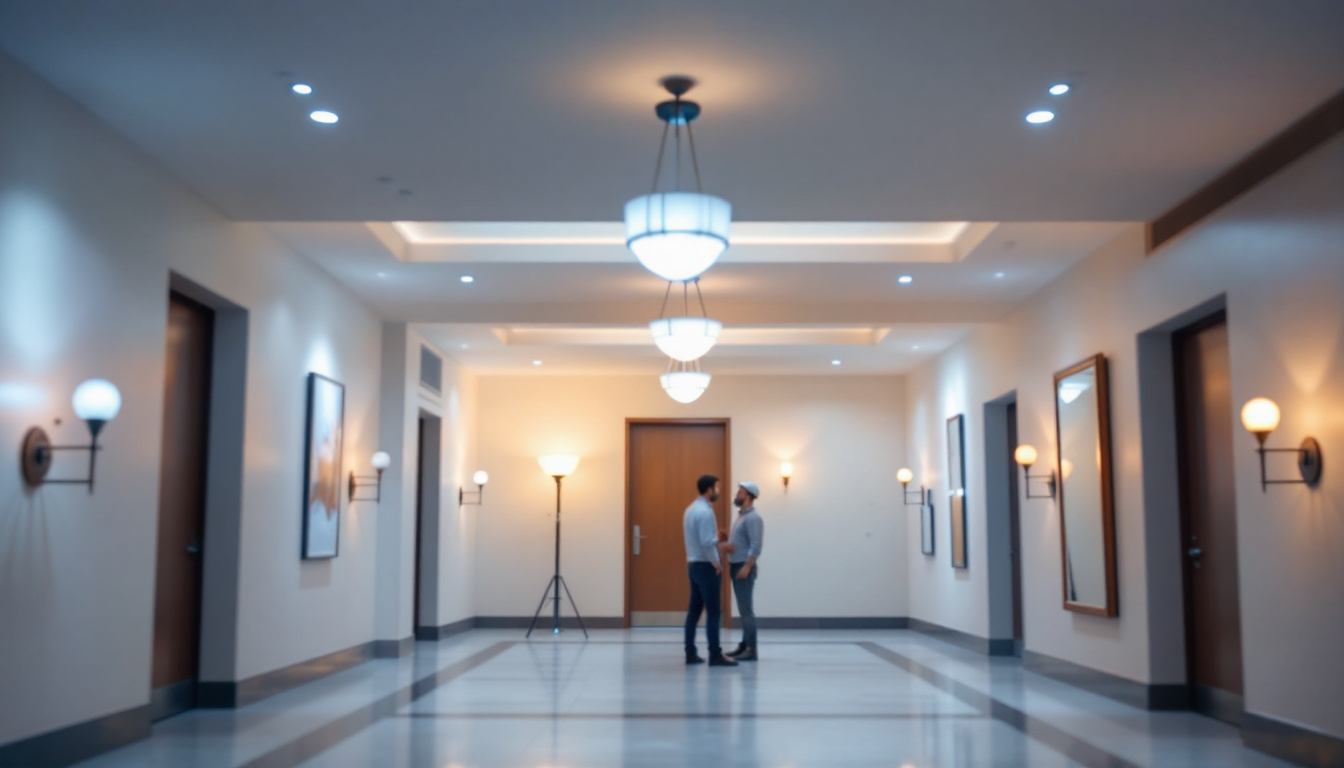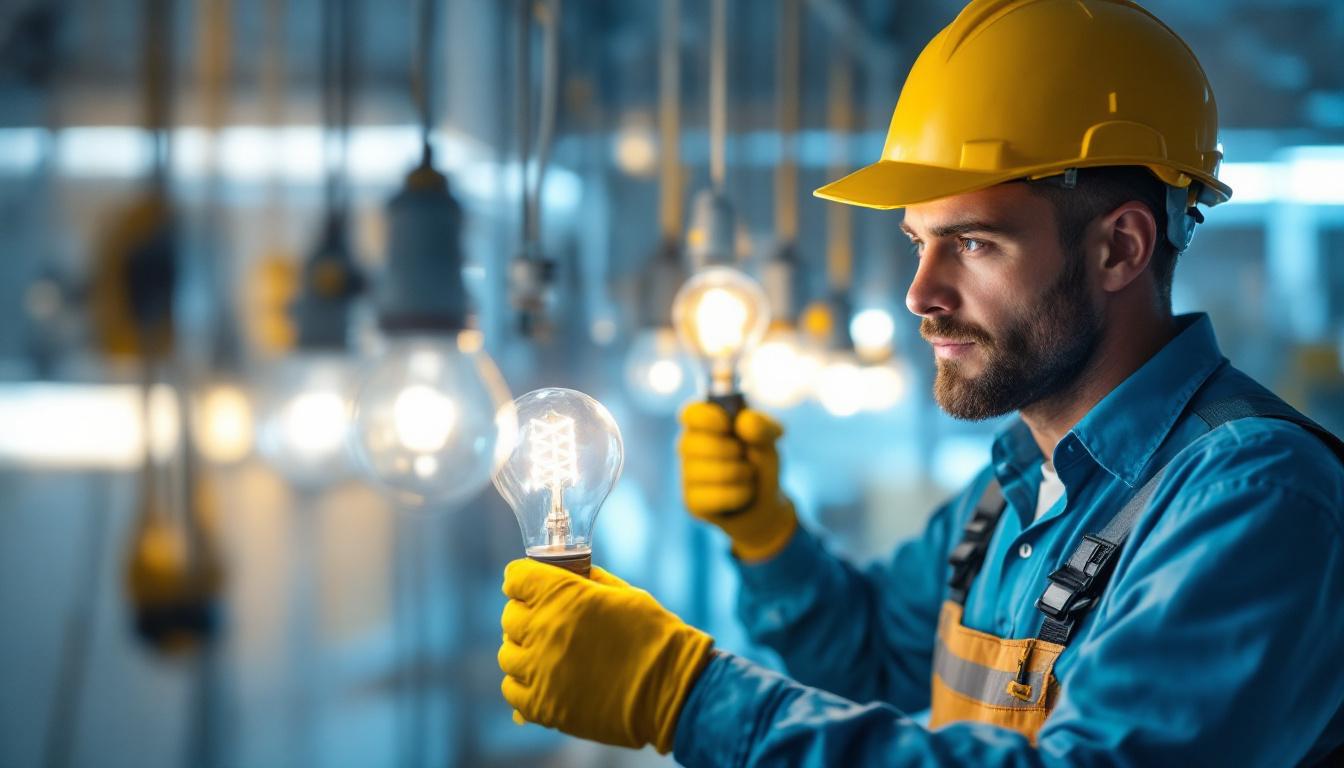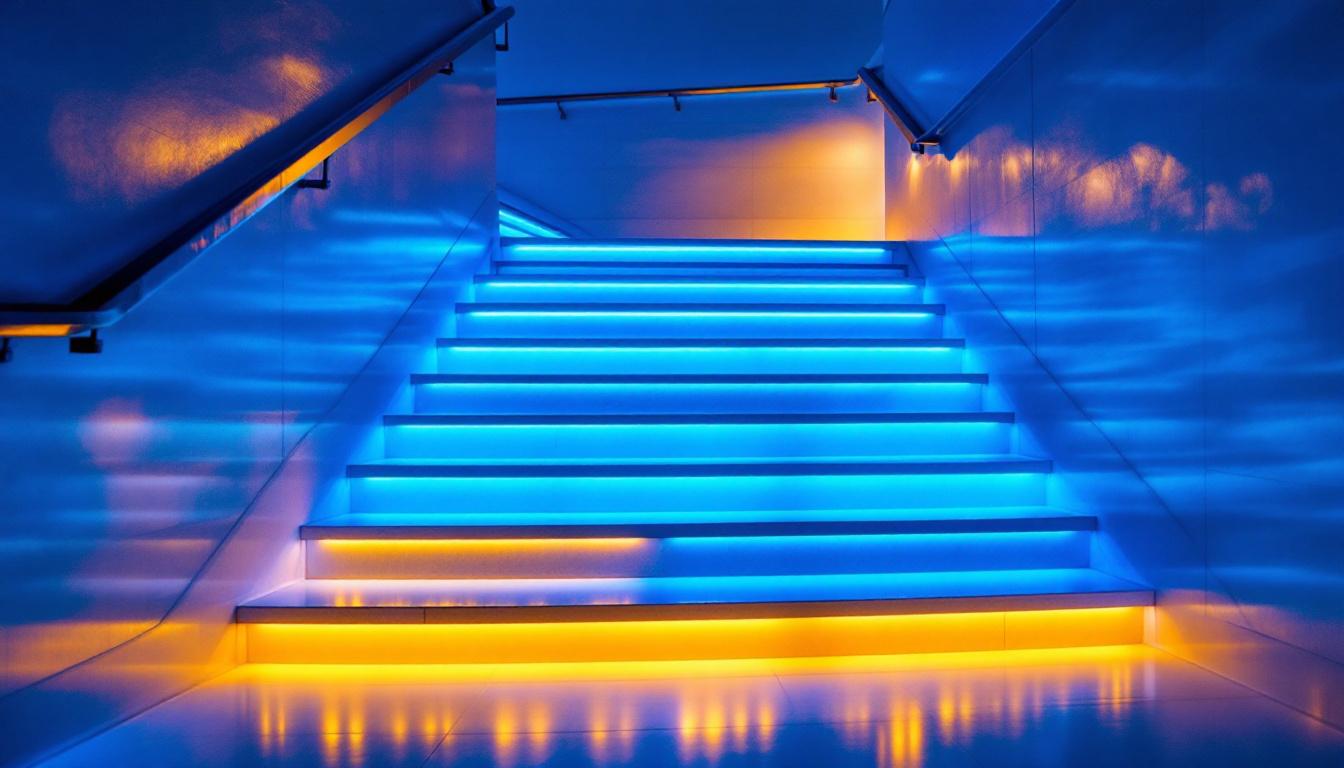
outdoor lighting is an essential aspect of landscape design that enhances both the functionality and aesthetics of outdoor spaces. For lighting contractors, understanding the various types of outdoor lights, their applications, and installation techniques is crucial for delivering high-quality results to clients. This article delves into the key considerations for outdoor lighting, including types of fixtures, design principles, and installation tips.
Outdoor lighting comes in various forms, each serving specific purposes. Understanding the different types of fixtures available is vital for selecting the right lighting solutions for various outdoor settings.
Pathway lights are designed to illuminate walkways, driveways, and garden paths. These fixtures not only enhance safety by guiding pedestrians but also add a decorative element to the landscape. Available in solar, LED, and low-voltage options, pathway lights can be easily installed and maintained.
When choosing pathway lights, consider the height and brightness of the fixtures. Taller lights can cast wider beams, while shorter lights provide a softer glow. It’s important to space the lights evenly to create a balanced look while ensuring adequate illumination for safety. Additionally, many pathway lights now come with customizable designs, allowing homeowners to select colors and styles that match their outdoor decor, further enhancing the aesthetic appeal of the property.
Wall-mounted fixtures and sconces are perfect for illuminating patios, decks, and exterior walls. These fixtures come in various styles, from modern to traditional, allowing them to complement the architecture of the home. They can also be used to highlight specific features, such as artwork or landscaping.
When installing wall mounts, pay attention to the height and placement to avoid glare and ensure optimal lighting. Additionally, consider using dimmable options to create versatile lighting scenarios for different occasions. Incorporating smart technology into wall sconces can also enhance functionality, allowing homeowners to control the lighting remotely or set schedules for automatic operation, making outdoor spaces more inviting and secure.
Flood lights are powerful fixtures that provide broad illumination for large areas. They are commonly used for security purposes, illuminating driveways, yards, and commercial properties. Flood lights can be mounted on poles, walls, or even trees, depending on the desired coverage.
When selecting flood lights, consider the wattage and beam angle. A wider beam angle will cover more area but may reduce intensity. For security applications, motion-sensor flood lights can enhance safety by automatically turning on when movement is detected. Furthermore, many modern flood lights are equipped with energy-efficient LED technology, which not only reduces electricity costs but also has a longer lifespan compared to traditional bulbs. This makes them an excellent choice for environmentally conscious homeowners looking to minimize their carbon footprint while still ensuring their property is well-lit and secure.
Effective outdoor lighting design involves more than just choosing the right fixtures. It requires a thoughtful approach to create a harmonious and functional outdoor environment. Here are some key design principles to consider.
Layering light involves combining different types of lighting to achieve a balanced and dynamic effect. This technique typically includes ambient, task, and accent lighting. Ambient lighting provides overall illumination, task lighting focuses on specific areas, and accent lighting highlights architectural features or landscaping.
For example, a well-lit patio may feature ambient lighting from overhead fixtures, task lighting from table lamps, and accent lighting to highlight trees or sculptures. This layered approach not only enhances the visual appeal but also improves the functionality of the space. Moreover, the use of dimmers can further refine the atmosphere, allowing homeowners to adjust the brightness according to the time of day or occasion, whether it’s a casual family dinner or a festive gathering with friends.
Creating focal points with outdoor lighting can draw attention to specific features in the landscape. This could include highlighting a beautiful tree, a water feature, or architectural details of a home. By strategically placing lights to accentuate these elements, the overall ambiance of the outdoor space can be significantly enhanced.
Consider using spotlights or well lights for this purpose. These fixtures can be directed to create dramatic effects, adding depth and interest to the landscape. Experimenting with different angles and intensities can yield stunning results. Additionally, incorporating colored lights can introduce an element of creativity, allowing for seasonal changes or themed events, such as warm hues for autumn gatherings or cool tones for summer nights under the stars.
Safety and security should be top priorities when designing outdoor lighting. Well-lit areas deter intruders and reduce the risk of accidents. Pathways, stairs, and entry points should be adequately illuminated to ensure safe navigation.
Incorporating motion sensors and timers can enhance security measures. These features can ensure that lights are activated when needed, providing peace of mind for homeowners. Additionally, using durable, weather-resistant fixtures will ensure longevity and reliability in outdoor environments. Beyond functionality, the strategic placement of lighting can also create a sense of safety, as well-lit spaces often feel more welcoming and less isolated. Furthermore, integrating smart home technology can allow homeowners to control their outdoor lighting remotely, adjusting settings or activating lights from anywhere, which adds an extra layer of convenience and security.
With growing concerns about energy consumption and environmental impact, selecting energy-efficient lighting solutions is more important than ever. Outdoor lighting can contribute significantly to energy usage, making it essential to choose sustainable options.
LED lights have become the preferred choice for outdoor lighting due to their energy efficiency and longevity. Compared to traditional incandescent bulbs, LEDs consume significantly less energy and have a much longer lifespan, reducing the frequency of replacements.
Additionally, many LED fixtures are now available in various color temperatures, allowing for greater design flexibility. From warm white to cool daylight, contractors can choose the perfect hue to complement the outdoor space.
Solar-powered lights are another sustainable option for outdoor lighting. These fixtures harness solar energy during the day and illuminate at night, reducing electricity costs and environmental impact. They are particularly suitable for areas without access to electrical outlets.
However, it’s essential to consider the location and sunlight exposure when installing solar lights. Areas with ample sunlight will yield the best results, while shaded areas may require alternative solutions.
Proper installation is critical for the performance and longevity of outdoor lighting. Here are some essential tips to ensure a successful installation process.
Before installation, it’s crucial to plan the layout of the lighting fixtures. This involves determining the purpose of each light, the desired brightness, and the overall aesthetic. Creating a lighting plan can help visualize the final outcome and ensure that all areas are adequately illuminated.
Consider using software or apps designed for lighting design to create a detailed plan. This can assist in calculating the spacing and positioning of fixtures to achieve the best results.
When installing hardwired outdoor lighting, it’s essential to adhere to local electrical codes and regulations. This may involve using underground wiring, junction boxes, and weatherproof connections to ensure safety and durability.
For low-voltage systems, transformers will be required to convert standard voltage to low voltage. Ensure that the transformer is appropriately rated for the total wattage of the fixtures to avoid overheating and potential hazards.
After installation, testing the lighting is crucial to ensure everything functions as intended. Adjust the angles and brightness levels of fixtures to achieve the desired effect. This may involve repositioning fixtures or changing bulb types to enhance performance.
Encourage clients to observe the lighting at different times of the day and in various weather conditions to ensure satisfaction. Making adjustments post-installation can significantly enhance the overall effectiveness of the lighting design.
Regular maintenance is essential to keep outdoor lighting systems functioning optimally. Proper care can extend the lifespan of fixtures and ensure consistent performance.
Outdoor fixtures are exposed to various elements, including dirt, dust, and moisture. Regular cleaning is necessary to maintain their appearance and functionality. Use a soft cloth and mild soap to clean the fixtures, avoiding abrasive materials that could scratch surfaces.
For solar lights, ensure that the solar panels are free of debris to maximize sunlight absorption. Regularly check for any signs of wear or damage, and replace bulbs as needed to maintain brightness.
Seasonal checks are crucial, especially in regions with harsh winters or heavy rains. Inspect fixtures for any damage caused by weather conditions and make necessary repairs. Additionally, ensure that wiring and connections are secure and protected from moisture.
Consider advising clients to store portable lighting fixtures indoors during extreme weather to prolong their lifespan. This proactive approach can prevent costly repairs and replacements in the long run.
Outdoor lighting plays a vital role in enhancing the beauty, safety, and functionality of outdoor spaces. For lighting contractors, understanding the various types of fixtures, design principles, and installation techniques is essential for delivering exceptional results. By considering energy efficiency and sustainability, as well as implementing proper maintenance practices, contractors can ensure that outdoor lighting systems remain effective and visually appealing for years to come.
As outdoor spaces continue to evolve, staying informed about the latest trends and technologies in outdoor lighting will empower contractors to meet the diverse needs of their clients. By combining creativity with technical expertise, outdoor lighting can transform any space into a welcoming and enchanting environment.
Ready to elevate your outdoor lighting projects with the finest selection of spec-grade fixtures? Look no further than LumenWholesale, where we offer an extensive range of top-quality lighting products at unbeatable wholesale prices. Say goodbye to local distributor markups and hello to superior lighting solutions that meet the highest industry standards. With our commitment to affordability and convenience, you’ll enjoy free shipping on bulk orders, ensuring you get the best value without any hidden fees. Transform your outdoor spaces with reliable, high-performance lighting from LumenWholesale. Wholesale Lighting at the Best Value is just a click away.

Discover the intricacies of hall lighting with insights from seasoned contractors.

Discover how chandelier shops have transformed the lighting industry with innovative designs and sustainable practices.

Explore the diverse types of fluorescent bulbs and discover how they influence the decisions and strategies of lighting contractors.

Discover expert insights on selecting and installing indoor LED lights for stairs, tailored specifically for lighting contractors.